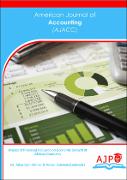| dc.contributor.author | Aitaa, Sam Kilimvi | |
| dc.contributor.author | Amadi, Solomon Ezekwesiri | |
| dc.date.accessioned | 2023-04-22T07:49:35Z | |
| dc.date.available | 2023-04-22T07:49:35Z | |
| dc.date.issued | 2023-04-21 | |
| dc.identifier.citation | Aitaa, S. K. & Amadi, S. E. (2023). Impact of financial inclusion on economic growth of African countries. American Journal of Accounting, 5(1), 15 - 33. https://doi.org/10.47672/ajacc.1427 | en_US |
| dc.identifier.issn | 2957-9058 | |
| dc.identifier.uri | http://dir.muni.ac.ug/xmlui/handle/20.500.12260/541 | |
| dc.description.abstract | The main objective of this study was to understand the effect of financial inclusion on economic growth of Africa. Although Africa is the second-most populous continent in the world with a 3.17% growth rate, it has the biggest proportion of the world's population without access to a bank, at a startling 45% throughout the continent. However, a growing number of Fintech businesses have emerged in Africa in recent years to address the issue of financial inclusion. With this advent, it was imperative to study the phenomenon and ascertain if there is any effect on the economy. Descriptive and Correlational Research Design were employed to explain and examine the relationship between financial inclusion and economic growth. This study adopted the quantitative research approach. Secondary data from Financial Access Survey (FAS), World Development Indicators (WDI) and The Global Financial Index Report from 2015 – 2021 were examined. The relationships were tested using Generalized Moments Method (GMM) that was preferred over the Ordinary Least Square method (OLS) because of its efficiency and veracity to work with small samples. The data was presented in form of tables and graphs. The results showed that financial inclusion indicators are positively correlated to the economic growth. Using the dimensions of financial inclusion such as availability, penetration, and usage, we can ascertain a positive impact on the economic growth of Africa at large. The outcome of the study will guide policy makers to identify the most effective strategies to achieve financial inclusion that enhances economic growth. While previous studies identified ATM and CBB as one of the highest financial inclusion indicators that aid economic growth, it is recommended that BCB with a higher correlation be considered too for economic growth. Therefore, governments should focus on building structures and systems that encourage borrowing to stimulate economic growth. | en_US |
| dc.language.iso | en | en_US |
| dc.publisher | American Journal of Accounting | en_US |
| dc.subject | Financial Inclusion | en_US |
| dc.subject | Economic Growth | en_US |
| dc.subject | Effect on Economy | en_US |
| dc.title | Impact of financial inclusion on economic growth of African countries | en_US |
| dc.type | Article | en_US |

